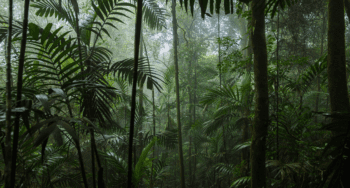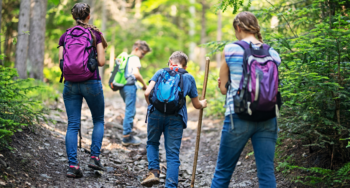Quick Guide to Poás Volcano National Park
Poás Volcano showcases one of the world’s largest active crater lakes just 37 kilometers north of San José, making it Costa Rica’s easiest volcano experience with only a 10-minute walk to the viewpoint. The stunning turquoise sulfuric acid lake sits at 8,900 feet, surrounded by steaming fumaroles that create an otherworldly landscape. Mandatory advance reservations through the SINAC website (2-3 days minimum) and early arrival (8:00-9:00 AM) are essential—clouds typically obscure the crater by 10:30 AM. The fully paved road from San José means any standard rental car works fine, and wheelchair-accessible paths make this Costa Rica’s most inclusive volcano experience.
Key Park Details:
- Entrance fee: $15 adults, $5 children (must book online in advance)
- Best viewing: 8:00-8:30 AM time slots before clouds roll in
- Two trails: Main crater (10 minutes, wheelchair-accessible) and Botos Trail (30-40 minutes, cloud forest)
- Drive time: 1.5 hours from San José, 1 hour from SJO airport
What You Need to Know:
- Temperature runs 10-15°F cooler than San José—bring layers and wind protection
- No food services inside the park—pack water and snacks
- Standard cars handle the paved route—no 4×4 needed
- Combine with coffee plantation tours for a perfect morning itinerary
Ready to see that turquoise crater? Contact Vamos for rental options that give you flexibility to arrive early and explore at your own pace.
Poás Volcano National Park sits just 37 kilometers north of San José, making it one of Costa Rica’s most accessible active volcano experiences. The park features one of the world’s largest active crater lakes—a stunning turquoise pool surrounded by steaming fumaroles that shifts between vibrant colors depending on volcanic activity and mineral concentration. Most visitors can complete the entire experience in 3-4 hours, including the drive from San José, the main crater viewpoint, and the peaceful Botos Trail that leads to a second, extinct crater filled with a jade-green rainwater lake. The catch? You’ll need advance reservations through the national park system, and your best chance of actually seeing the crater (rather than just clouds) happens in the early morning hours before fog rolls in around 10 AM.
Key Takeaways
- Advance online reservations are mandatory—the park limits daily visitors to protect the environment and manage crowds.
- Morning visits (8-9 AM) offer the best crater visibility before clouds obscure the view.
- Entry costs $15 for foreign adults, $5 for children under 12.
- The main crater viewpoint requires only a 10-minute walk from the parking area on a paved, wheelchair-accessible path.
- The Botos Trail adds another 30-40 minutes and takes you to a peaceful second crater surrounded by cloud forest.
- Standard rental cars work fine—the road is fully paved all the way to the park entrance.
- You can easily combine Poás with coffee plantation tours in the same morning for a full-day experience.
- Temperatures at the crater run 10-15°F cooler than San José due to the 8,900-foot elevation.
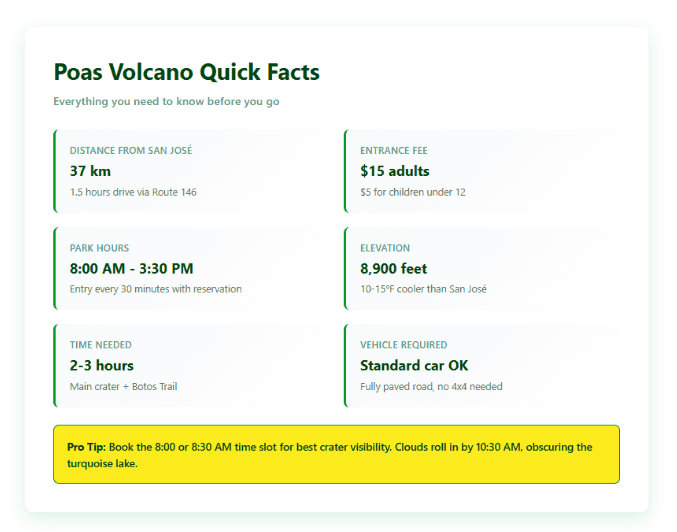
How Do You Actually Reserve Your Spot at Poás?
The park switched to a mandatory reservation system in 2018 to manage crowds and protect the fragile volcanic ecosystem. You cannot simply show up at the gate and buy tickets—the rangers will turn you away without a confirmed reservation.
The reservation process:
Book through the official SINAC website (Sistema Nacional de Áreas de Conservación) at least 2-3 days before your planned visit. The system opens reservations 30 days in advance, and weekends fill up quickly during high season (December-April). You’ll need to create an account, select your date and time slot, and pay the $15 fee per adult online.
Time slots run from 8:00 AM to 3:30 PM, with entry allowed every 30 minutes. Here’s the insider tip: book the earliest slot available, ideally 8:00 or 8:30 AM. The crater sits at nearly 9,000 feet in elevation, where clouds form quickly as the day warms up. By 10:30-11:00 AM, there’s a 60-70% chance the crater will be completely socked in with fog.
Print your confirmation email or have it readily accessible on your phone. The park entrance staff will check your reservation before allowing vehicle entry.
Can’t get a reservation? Check the website 2-3 days before your desired date—cancellations open up regularly as travelers change their plans.
What’s the Best Way to Get There from San José?
The 37-kilometer drive from San José takes about 1.5 hours, though morning traffic leaving the city can add 15-20 minutes during weekdays. The route is entirely paved and well-maintained, meaning you don’t need a 4×4 for this trip.
The route from San José:
Head north through Alajuela on Route 146, which winds through coffee country as you climb into the mountains. The road narrows in sections but remains paved throughout. You’ll pass through the small mountain towns of Fraijanes and Poasito—the latter makes a good stop for breakfast or coffee on your return trip.
If you’re starting from Juan Santamaría International Airport (SJO) in Alajuela, the drive shortens to about 1 hour since you’re already north of San José proper. This makes Poás an excellent first-day activity if you arrive on a morning flight with an early reservation slot.
The route climbs steadily, and you’ll notice the temperature dropping and vegetation changing as you ascend. The last 10 kilometers wind through stunning cloud forest with roadside views of coffee plantations terraced on steep hillsides.
Parking and entry:
The park has a large paved parking area near the visitor center. Arrive at least 15 minutes before your reservation time to allow for parking, using the restroom, and walking to the entrance checkpoint.
Having your own rental car gives you the flexibility to arrive early, take your time exploring both trails, and stop for coffee or a traditional Costa Rican breakfast on the return drive. If you’re debating between renting a car and booking a tour, check out our guide on transportation options in Costa Rica to understand the cost and convenience trade-offs.
What Will You Actually See at the Crater?
The main crater viewpoint sits at the end of a 10-minute walk from the visitor center along a fully paved, wheelchair-accessible path. This makes Poás one of the most accessible volcano experiences you’ll find anywhere.
The active crater:
The main crater measures nearly 1.5 kilometers across and drops 300 meters deep—one of the largest active volcanic craters on Earth. At the bottom sits the turquoise sulfuric acid lake, which reaches temperatures up to 160°F due to volcanic activity below. The water’s color shifts from bright turquoise to jade green depending on mineral content and recent volcanic activity.
Fumaroles (steam vents) dot the crater walls, releasing sulfuric gas that creates an otherworldly landscape. On active days, you might see small geysers shooting up from the lake’s surface. The smell of sulfur becomes noticeable as you approach the viewpoint—it’s distinctive but not overwhelming.
The viewing platform:
A large, covered observation deck provides excellent views while protecting visitors from the elements. Information panels explain the volcano’s geology, history, and current activity levels. Park rangers station themselves here to answer questions and provide context about what you’re seeing.
The park service closes the crater viewpoint if volcanic activity produces dangerous gas levels—this happens occasionally but rarely. The website and phone line provide current status updates before you drive up.

Why Should You Hike the Botos Trail?
After viewing the active crater, most visitors rush back to their cars, missing the park’s second major attraction. The Botos Trail leads to an extinct crater that tells a completely different volcanic story.
The trail experience:
This 30-40 minute loop trail (600 meters each way) winds through pristine cloud forest at 8,900 feet elevation. The path remains wide and well-maintained with wooden walkways over muddy sections, although it’s not paved like the main crater trail.
The cloud forest here teems with life—mosses drape from every branch, bromeliads cluster in tree crevices, and the constant moisture creates an almost magical atmosphere. Listen for the distinctive call of the emerald toucanet, which is a small green toucan species found only at these elevations.
Laguna Botos:
The trail emerges at a viewpoint overlooking Laguna Botos, a peaceful crater lake formed when this secondary crater became extinct thousands of years ago. Unlike the acidic turquoise lake at the main crater, Botos is a natural rainwater lake surrounded by lush forest. The contrast between the two craters—one violently active, one peacefully dormant—illustrates different stages of the volcanic lifecycle.
The lake sits below the viewpoint, creating a stunning photo opportunity with the forest-encircled water framed by volcanic rock walls. Early morning visitors might see mist rising from the water’s surface.
What Should You Bring for Your Visit?
The 8,900-foot elevation creates mountain weather that shifts quickly. Come prepared for changing conditions, even if San José is warm and sunny.

Essential items:
Layers are crucial. The temperature at the crater typically runs 10-15°F cooler than San José, and the wind at the exposed crater rim makes it feel even colder. Bring a windproof jacket or fleece even on sunny days. Long pants protect your legs on the Botos Trail, where morning moisture makes the vegetation damp.
Rain gear earns its spot in your day pack regardless of the season. Afternoon clouds often produce light rain, and the cloud forest section stays perpetually misty. A light rain jacket or poncho takes up minimal space and keeps you comfortable if conditions change.
The volcanic gas at the crater can irritate sensitive respiratory systems. If you have asthma or respiratory issues, bring your inhaler. The park provides masks at the visitor center for those who need them, but bringing your own ensures proper fit.
Photography considerations:
The dramatic crater and misty cloud forest create incredible photo opportunities, but the conditions challenge cameras and phones. Bring a microfiber cloth to wipe condensation from lenses—the humidity and temperature changes cause constant fogging. A plastic bag protects your electronics during unexpected rain showers.
The lighting changes rapidly as clouds move across the crater. Take multiple shots with different exposures to ensure you capture the turquoise lake’s vibrant color, which can wash out in bright conditions or disappear in shadows.
When Should You Plan Your Visit?
Dry season (December-April):
These months offer the most reliable crater visibility, though even during the dry season, you’ll want that 8:00-9:00 AM time slot. The trade-off comes in the form of more visitors—weekends can feel crowded at the main viewing platform. Book your reservation as far in advance as possible during this period.
The surrounding coffee plantations are harvesting during January and February, adding an extra dimension if you plan to combine Poás with a coffee tour. The farms buzz with activity, and you’ll see workers hand-picking the red coffee cherries on the hillsides.
Green season (May-November):
Afternoon rain becomes likely during these months, but morning visits still work well. The upside? Fewer crowds, lusher vegetation, and better deals on accommodations if you’re staying overnight in the area. The cloud forest section of the Botos Trail looks particularly stunning during the green season when everything explodes with growth.
October typically brings the heaviest rainfall, making crater visibility less reliable even in the morning. June, July, and early August offer a sweet spot—still considered green season with lower prices, but with a brief dry spell that improves visibility chances.
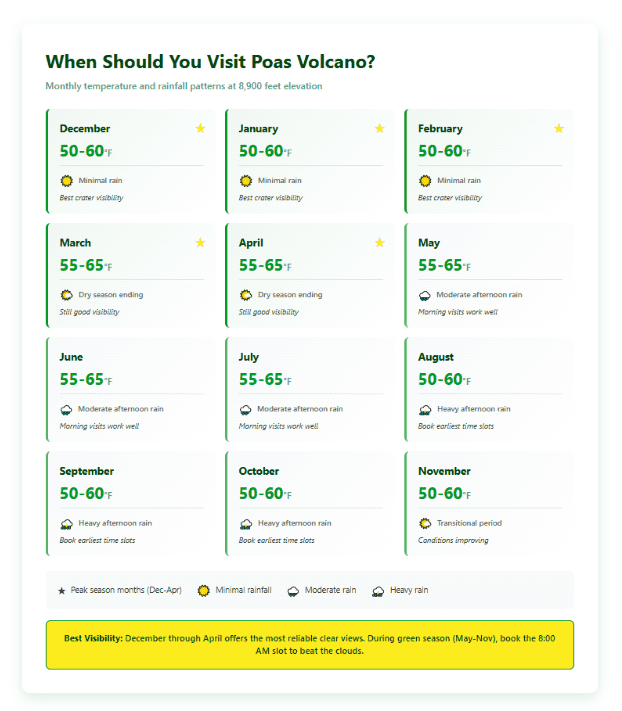
Where Should You Stay Near Poás Volcano?
Most visitors treat Poás as a day trip from San José or Alajuela, but staying near the volcano lets you catch that golden early morning light without rushing. The mountain towns between Alajuela and the park entrance offer everything from budget sodas (small family restaurants) to upscale lodges.
Poasito village:
This tiny mountain community sits 15 minutes downhill from the park entrance. Several small lodges and B&Bs cater to visitors and offer basic but comfortable accommodations at $50-80 per night. The advantage? You can wake up, eat breakfast, and arrive at the park within 20 minutes—no early morning traffic stress.
Restaurante El Sabor de Montaña serves an excellent traditional Costa Rican breakfast if you’re staying nearby. Their gallo pinto (rice and beans), fresh fruit, and strong coffee fuel many early morning crater visits.
Vara Blanca area:
About 20 minutes from the park, this area provides more lodging options across different price points. Peace Lodge ($300-500/night) offers luxury accommodations with waterfalls on the property, making it easy to combine Poas with La Paz Waterfall Gardens in a two-day itinerary. Mid-range options like Poas Volcano Lodge ($80-150/night) provide comfortable rooms with volcano views from the property.
Staying in Alajuela:
If you’re on a budget or want more restaurant options, base yourself in Alajuela (30 minutes from the park). This small city near SJO airport offers dozens of hotels at every price point, plus easy access to both the volcano and the airport for arrivals or departures.
How Can You Combine Poás with Other Activities?
The area around Poás offers several attractions that pair naturally with a morning volcano visit, creating a full day of exploration without excessive driving.
Coffee plantation tours:
The mountain slopes around Poás produce some of Costa Rica’s finest coffee. Several plantations offer tours explaining the full journey from cherry to cup. Doka Estate (15 minutes from the park) runs excellent 90-minute tours showing traditional processing methods still used today. Starbucks operates Hacienda Alsacia nearby—a working farm with public tours focused on sustainable growing practices and coffee science.
Most plantation tours run mid-morning to early afternoon, fitting perfectly after a 8:00 AM Poás visit. You’ll descend from the cold crater rim to warmer coffee country, where the mid-morning sun highlights the emerald-green coffee plants terraced across the hillsides.
La Paz Waterfall Gardens:
This private nature park sits 30 minutes north of Poás on the Caribbean slope. Five waterfalls, a butterfly observatory, a hummingbird garden, and a rescue animal sanctuary create an entirely different experience from the stark volcanic landscape. The entrance fee runs steeply at $48 for adults, but the extensive grounds and multiple attractions justify the cost if you have 3-4 hours to explore thoroughly.
The combination of Poás and La Paz makes a long but rewarding day. Start at Poás by 8:00 AM, finish there by 10:00-10:30 AM, then head to La Paz for lunch and an afternoon exploring the waterfalls and gardens.
How Does Poás Compare to Other Costa Rica Volcanoes?
Costa Rica offers several volcano experiences, each with distinct characteristics. Understanding the differences helps you choose which ones fit your itinerary and interests.
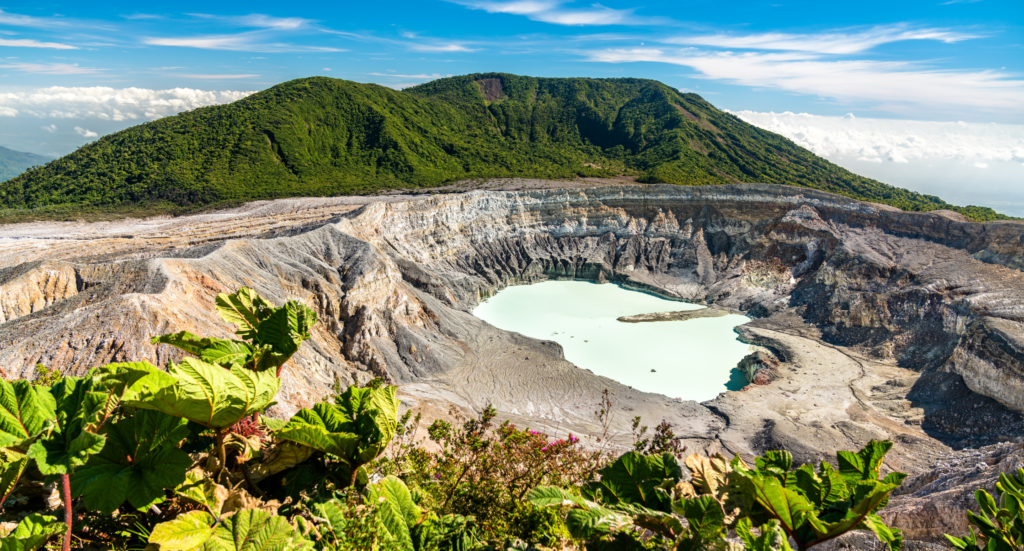
Poás or Irazú for a day trip?
Both volcanoes make excellent day trips from San José with similar drive times. Poás offers the more dramatic crater lake and a better secondary trail through cloud forest. Irazú sits higher (11,260 feet) with colder temperatures and the unique opportunity to see both coasts on clear days. Poás requires advance planning with reservations, while Irazú allows spontaneous visits.
For first-time visitors, Poás edges ahead due to the stunning turquoise lake and the Botos Trail’s forest experience. Irazú appeals more to geology enthusiasts interested in seeing multiple crater types and Costa Rica’s highest accessible point.
Is Poás Accessible for Everyone?
The main crater viewpoint at Poás stands out as one of Central America’s most accessible volcano experiences for people with mobility limitations.
Wheelchair accessibility:
The path from the visitor center to the crater viewpoint is completely paved and gently graded. Manual wheelchairs manage the route easily with a companion, while mobility scooters and power wheelchairs handle it independently. The covered viewing platform offers ample space for wheelchairs to position for photographs and extended viewing.
The visitor center includes accessible restrooms and a café with wheelchair-friendly tables. Designated parking spots for visitors with disabilities sit closest to the entrance.
The Botos Trail challenge:
This secondary trail does not offer wheelchair accessibility. The path includes wooden walkway sections, uneven ground, some moderate inclines, and steps in certain areas. Visitors with mobility challenges should plan for the main crater viewpoint only, which still provides an excellent volcano experience.
Respiratory considerations:
The volcanic gases at the crater can affect people with asthma, COPD, or other respiratory conditions. The park provides masks at the visitor center for visitors who need them. Sensitive individuals should monitor air quality and step back from the crater rim if experiencing breathing difficulty.
The 8,900-foot elevation causes noticeable effects for some visitors—shortness of breath with exertion, mild headaches, or fatigue. These symptoms typically remain mild but can affect elderly visitors or those with heart conditions. Talk with your doctor before visiting if you have concerns about high-elevation activity.
What Vehicle Do You Need for This Trip?
Here’s good news if you’re planning to rent a car: Poás doesn’t require a 4×4 SUV. The completely paved route from San José means a standard sedan or economy car handles the trip without issues.
Vehicle considerations:
The road climbs steadily with switchback turns, but the pavement remains in good condition throughout. Any rental car with reasonable power manages the elevation gain. Compact cars work fine if you’re traveling as a couple, while mid-size sedans or small SUVs provide more comfort for families.
If you’re planning to combine Poás with destinations that do require 4×4—like Monteverde, Santa Teresa, or remote beaches—then opt for the SUV. But for a Poás-focused day trip, save money on the standard vehicle.
Why renting makes sense for this trip:
Tour companies charge $60-90 per person for Poás tours, and you’re locked into their schedule with limited time at the crater. A rental car for the day costs $40-60 total (depending on vehicle class), gives you complete schedule flexibility, and allows easy stops at coffee plantations or restaurants on the return drive.
The route from San José is straightforward enough that even first-time Costa Rica visitors manage it comfortably. Having your own vehicle also means you’re not rushing to keep up with a tour group—you can spend as long as you want at each crater viewpoint and hiking the trails.
Costa Rica requires basic liability insurance for all rental vehicles, regardless of your credit card coverage—this is the law, not an upsell. We include transparent insurance pricing upfront so you know exactly what you’re paying. For a detailed breakdown of Costa Rica’s insurance requirements, see our Costa Rica insurance guide.
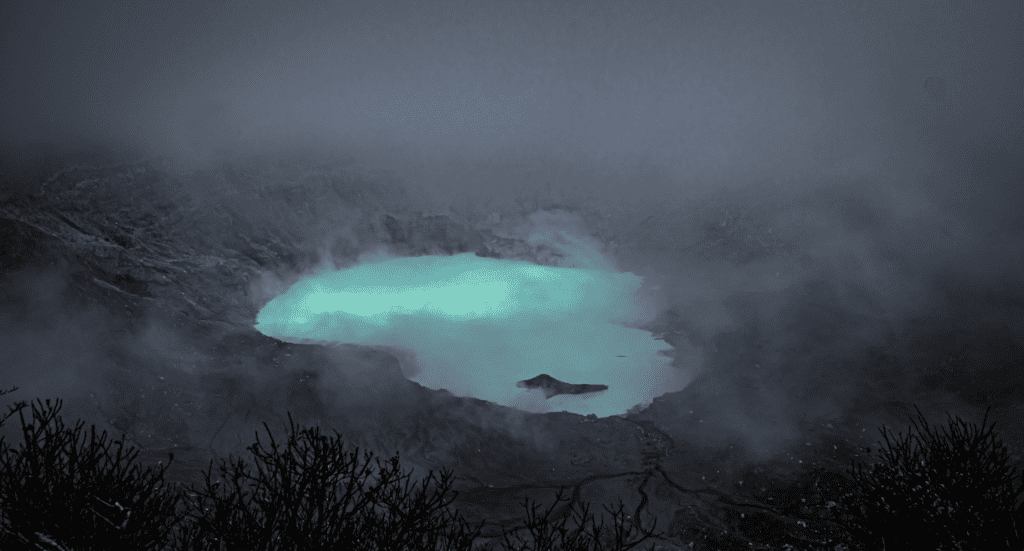
Ready to See That Turquoise Crater?
Poás delivers one of Costa Rica’s most rewarding volcano experiences with minimal hassle—as long as you book that advance reservation and aim for an early morning time slot. The combination of the active turquoise crater lake and the peaceful Botos Trail provides two completely different perspectives on volcanic activity in one compact visit.
Your action plan:
- Book your reservation through the SINAC website 2-3 weeks before your trip, selecting the earliest time slot available (8:00 or 8:30 AM)
- Plan for a 1.5-hour drive from San José or 1 hour from Alajuela
- Bring layers, rain gear, and your camera with a lens cloth
- Arrive 15 minutes before your reservation time
- Visit the main crater first, then hike the Botos Trail before leaving
- Consider adding a coffee plantation tour on your return drive
The entire experience typically wraps up by 11:00 AM-noon, leaving your afternoon open for exploring San José’s museums, heading to your next destination, or simply relaxing over a long lunch at a mountain soda with views down the valley.
Need help planning the rest of your Costa Rica itinerary? Check out our guide to day trips from San José for more volcano options, coffee tours, and Central Valley attractions that pair well with your Poas visit. And if you’re ready to book your rental car for maximum flexibility, reserve with Vamos to get the vehicle you need with no insurance surprises.
Frequently Asked Questions
Is Poás Volcano worth visiting?
Yes, especially if you’re based in San José or flying into/out of SJO airport. Just 1.5 hours from the capital, Poás delivers one of the world’s largest active crater lakes with that iconic turquoise color—and you only need a 10-minute walk from parking to see it. The wheelchair-accessible paved path makes it Costa Rica’s easiest volcano experience, and the Botos Trail adds a peaceful cloud forest hike to a second extinct crater. The catch? You must book online 2-3 days ahead since walk-ups aren’t allowed, and you need to arrive by 8:00-9:00 AM before clouds roll in. If you’re willing to do the advance planning and early wake-up, you’ll get one of the country’s most dramatic natural sights in a quick half-day trip.
Do you need to make reservations for Poás Volcano?
Yes, advance online reservations are mandatory—rangers will turn you away without a confirmed booking. The park switched to this system in 2018 to manage crowds and protect the ecosystem. Book through the official SINAC website at least 2-3 days before your visit (reservations open 30 days in advance). You’ll pay $15 per adult online, select a specific 30-minute entry window between 8:00 AM and 3:30 PM, and get a confirmation email to show at the gate. Weekends fill up fast during high season (December-April), so book earlier if possible. Can’t find availability? Check back 2-3 days before your date—cancellations pop up regularly.
What time should you visit Poás Volcano to actually see the crater?
Book the 8:00 or 8:30 AM time slot. The crater sits at 8,900 feet, where morning clouds form quickly as temperatures rise. By 10:30-11:00 AM, there’s a 60-70% chance the crater will be completely fogged in. Early arrivals get clear views of that stunning turquoise acid lake before the clouds obscure everything. This means leaving San José around 6:00-6:30 AM to account for the 1.5-hour drive plus arrival time, but it’s worth it—the difference between seeing a dramatic volcanic crater and staring at a wall of fog. If you’re staying near the park in Poasito or Vara Blanca, you can sleep in a bit longer and still catch that early slot.
How long do you need at Poás Volcano National Park?
Plan for 2-3 hours total at the park itself. The main crater viewpoint takes about 30-40 minutes, including the 10-minute walk each way and time for photos. Add another 30-40 minutes if you’re hiking the Botos Trail to the second crater through cloud forest. Most visitors finish by 10:30-11:00 AM, which leaves your afternoon open for coffee plantation tours on the drive back or other activities. With the 1.5-hour drive each way from San José, the entire experience fits into a half-day (leaving around 6:30 AM, back by noon). If you’re combining Poás with La Paz Waterfall Gardens or a coffee tour, dedicate a full day.
What should you wear to Poás Volcano?
Layers are essential since it’s 10-15°F cooler at the crater than in San José. Start with long pants and a t-shirt, then bring a windproof jacket or fleece—even on sunny days, the exposed crater rim gets windy and cold. Pack a light rain jacket regardless of the season, since afternoon showers and constant mist in the cloud forest are common. Closed-toe shoes with decent traction work fine since the main crater path is fully paved—hiking boots aren’t necessary unless you want extra ankle support on the Botos Trail. Skip the shorts and tank tops you packed for the beach. The temperature typically runs 50-65°F at the crater, and the wind chill makes it feel colder.
How much does it cost to visit Poás Volcano?
$15 per adult, $5 for children under 12. You pay this fee when booking your reservation online through the SINAC website—the only additional charge at the gate is for parking. The parking fee is 2,000 colones or about $4 for a vehicle. Tours from San José run $60-90 per person, so having your own vehicle saves money (a rental car costs $40-60 total per day versus $120-180+ for two people on a tour). The park doesn’t charge extra for the Botos Trail or any facilities. Bring cash if you want snacks or drinks from the small café at the visitor center, but there are no food vendors inside the park itself.
Do you need a 4×4 to drive to Poás Volcano?
No. The road from San José to the park entrance is completely paved and well-maintained—any standard rental car handles it fine. The route climbs steadily with switchback turns, but you don’t need SUV clearance or four-wheel drive. A compact sedan works perfectly for couples, while a mid-size car provides more comfort for families. This is one of the few volcano parks in Costa Rica accessible with a basic rental, making it budget-friendly. Save the 4×4 rental for destinations that actually need it, like Monteverde or remote beaches. That said, if you’re combining Poás with 4×4-required destinations elsewhere in your trip, you might as well have the SUV for everything.
Can you combine Poás Volcano with other activities in one day?
Absolutely, and you should. After an 8:00 AM Poás visit, you’ll finish by 10:30-11:00 AM with the whole day ahead. The surrounding area produces some of Costa Rica’s best coffee, so stop at Doka Estate or Hacienda Alsacia for a plantation tour (90 minutes, mid-morning departures work perfectly). Alternatively, continue north to La Paz Waterfall Gardens for lunch and an afternoon exploring five waterfalls, butterfly gardens, and a rescue animal sanctuary—though this makes a long, full day. Budget travelers can skip the paid tours and just stop at mountain sodas (small family restaurants) in Poasito or Fraijanes for traditional breakfast or lunch with incredible valley views.



